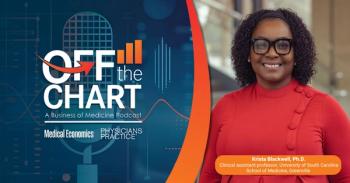
What online reviews — and the words patients use — say about your practice
Key Takeaways
- Nearly half of Yelp reviews from 2017-2023 were negative, often due to administrative issues like long phone waits and billing disputes.
- Real-time data from online reviews could complement traditional patient satisfaction surveys, enabling quicker improvements in patient experience.
A Penn Medicine study of over 1 million Yelp reviews finds that administrative hassles and poor communication drive patient dissatisfaction, while kindness and connection still win patients over.
Negative online reviews of health care facilities aren’t just angry rants — they’re patterns.
According to a new analysis from the
Notably, the most common red flag in the negative reviews was the word “not.”
“Despite calling numerous times, I was never given a quote, so I had no idea what to expect,” one patient wrote in a negative review. “On arriving at the hospital on the day of the procedure, I was told that I could not check in since my insurance was not verified.”
The study, published August 1 in
Lead author Neil Sehgal, M.E., and senior author Anish Agarwal, M.D., M.P.H., say this kind of real-time data could be a powerful complement to traditional patient satisfaction surveys.
“The current ways in which health care facilities measure
Phone trees, bills and frustration
Topic modeling identified five major drivers of 1- and 2-star reviews:
- Poor phone experience
- Long hold times
- Unfair payment
- Poor treatment
- Malpractice claims
Key terms in these reviews included the words “not,” “told,” “call,” “hold,” and “wasted.”
Hospitals and pharmacies received the lowest average ratings, while lactation services and prenatal care offices earned the highest.
“And” tells a different story
Positive reviews made up just over half of the dataset, and while negativity hinged on denial and disconnection, the word most strongly associated with 4- and 5-star reviews was “and.”
As patients described their experiences, they often listed a series of warm interactions: “Everyone was very attentive and nice and helpful.”
Top themes in glowing reviews included kindness, anxiety relief, professionalism and helpfulness. Words like “friendly,” “kind,” and “helpful” were closely linked with high ratings. Surprisingly, even “nervous” and “scared” appeared frequently in positive reviews — a sign that patients often remembered when staff helped calm their fears.
“Had a great experience with nurse [redacted]. She was very kind, knowledgeable and absolutely great service,” another patient wrote in a positive review. “She guided us through the whole process and had absolutely great patience.”
The study reinforces the already strong case for listening to online reviews, not just for reputational management, but for operational insights.
Traditional patient satisfaction surveys like HCAHPS and Press Ganey remain important, but they often fail to capture the emotion and immediacy of real-time narratives. Online reviews, for all their messiness, offer a granular view of what patients encounter before, during and after clinical visits.
“We’re interested in understanding how specific facility characteristics, such as size, ownership or patient volume might shape patient sentiment and communication challenges,” Sehgal said.
Agarwal sees immediate potential in flipping the script. “I'd love to see where and which hospitals consistently knock this out of the park and, despite the last five to ten years, continue to provide high-quality and highly well-regarded care,” he said. “If we spend more time learning from those doing it well, we can all move forward.”
Newsletter
Stay informed and empowered with Medical Economics enewsletter, delivering expert insights, financial strategies, practice management tips and technology trends — tailored for today’s physicians.
















